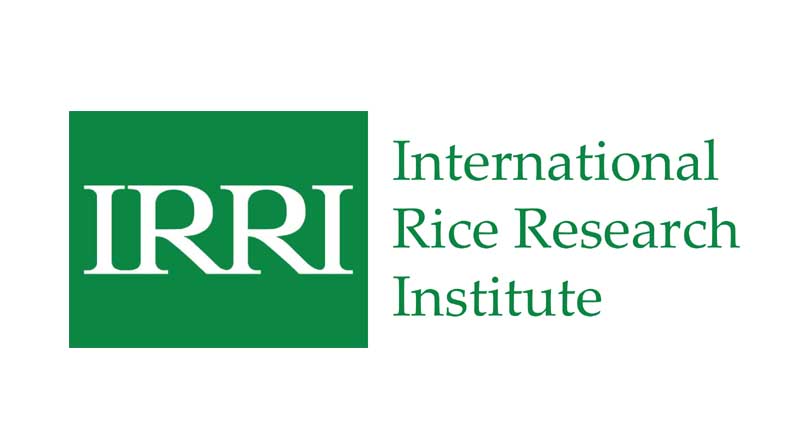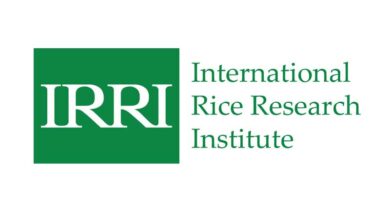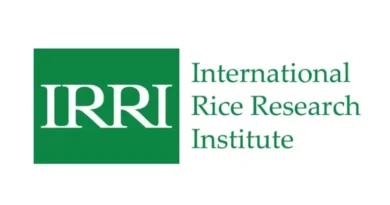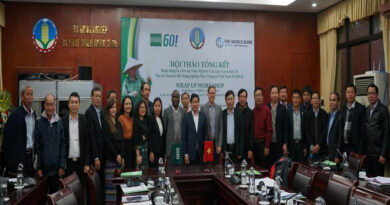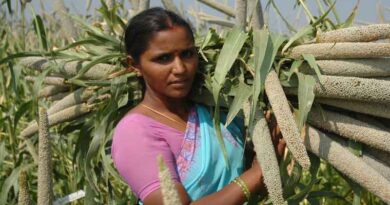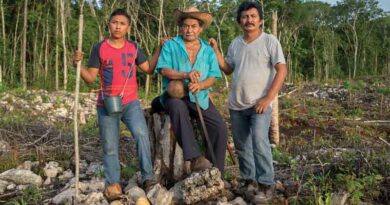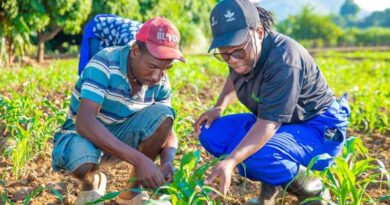SpeedFlower: IRRI develops first-of-its-kind speed breeding protocol for indica and japonica rice
29 December 2023, Varanasi: Scientists from the International Rice Research Institute (IRRI) successfully developed a robust, first-of-its-kind speed breeding protocol that reduces the generation times required in a year for growing indica and japonica rice.
The current rate of genetic gain attained in rice crops through breeding is inadequate to meet the increasing future rice demand of a growing population. The development of new varieties is further hindered by longer generation times and seasonal constraints.
Through the SpeedFlower protocol, these factors will no longer impact the acceleration of varietal development, by reducing generation times by almost half which allows growing four to five generations of indica and japonica rice in a year.
“We can now develop new high-yielding, climate-resilient, and nutritionally superior rice varieties in a much shorter duration. This is a major scientific step toward significantly boosting genetic gain in rice, ultimately contributing to global food security,” said program lead Drs Vikas Kumar Singh, Uma Maheshwar Singh and Pallavi Sinha.
The Speed Breeding technique
The Speed Breeding (SB) technique has been introduced to effectively manage environmental factors and is suitable for short- and long-day crops, allowing it to be utilized throughout the year. As a result, SB has gained popularity as a method for advancing multiple generations per year.
Using SB in glasshouses and controlled chambers has the potential to enhance breeding outputs for both short- and long-day crops. This is achieved by providing more controlled growth conditions, which work more uniformly for diverse germplasm and breeding materials compared to field conditions.
The success of SB in various crops has led to the establishment of a state-of-the-art SpeedBreed facility at the ISARC in Varanasi, India. To achieve SB in rice, the facility has been customized with controlled growth parameters using fully enclosed walk-in growth chambers designed to optimize the SB protocol for all types of rice varieties without the need for tedious embryo rescue techniques and tiller removal.
“SpeedFlower demonstrates a remarkable impact of SB on crop research. With this protocol, we can expedite crossing and inbreeding activities, completing them within 1.5–2 years instead of the usual 6–7 years required in the field,” said ISARC Director, Dr. Sudhanshu Singh.
A significant leap in rice breeding
The SpeedFlower protocol significantly expedites the development of mapping populations, enabling rapid mapping of crucial traits. It revolutionizes breeding programs, allowing completion of breeding cycle in about 1.5 years.
The protocol focuses on optimizing light spectrum, intensity, photoperiod, temperature, humidity, nutrient levels and hormonal regulation to expedite growth, flowering and maturity in rice. It has demonstrated flowering within just 60 days for tested rice varieties and achieved a 50% reduction in seed maturity time, irrespective of their natural flowering durations.
A subset of 198 genotypes, representing 12 diverse sub-groups of Oryza sativa L. from the 3,000 Rice Genomes Project (3K RGP) was selected to validate the optimized SpeedFlower in the SB facility. The subset was chosen based on their molecular diversity, different flowering durations and geographic locations. In field conditions, the flowering time of these genotypes ranged from 58 to 127 days. However, when grown under the optimized SpeedFlower, all 198 genotypes successfully flowered within a shorter period of 58 days. The protocol’s significant reduction in flowering time for photosensitive and late-duration genotypes, along with remarkable synchronization among segregating generations, addresses a major bottleneck in breeding programs.
The SpeedBreed Facility and the innovative SpeedFlower protocol mark a significant leap in rice breeding, addressing generation time and seasonal constraints. The optimized protocol works for all the maturity durations (early, medium and late) of indica and japonica rice and enables synchronous flowering.
“The SB technique is still in its early stages, and there are both advantages and disadvantages associated with its implementation that require further research. That said, this protocol has the potential to make a significant impact on global food security by rapidly developing improved rice varieties,” said Dr. Hans Bhardwaj, IRRI Rice Breeding Innovations Director.
Partnerships for SpeedBreed and SpeedFlower
Considered as a model facility for speed breeding in rice, IRRI plans to establish a consortium to offer support services to National Agricultural Research and Extension Systems (NARES) and private companies on establishing and operating speed breeding facilities.
The protocol will be further refined for enhanced output and comprehensive testing will be done to a broader range of rice genotypes. The program proponents aim to further collaborate with NARES, including other centers under the CGIAR, to leverage shared knowledge and expertise toward optimizing the protocol for other crops.
“We continue to push research boundaries to develop innovations that are urgently needed in light of a growing food and climate crises. This breakthrough sets the new standard toward accelerating genetic gains for global food security,” said IRRI Interim Director General, Dr. Ajay Kohli.
The study behind the protocol was led by Drs. Vikas Kumar Singh, Uma Maheshwar Singh, and Pallavi Sinha and was developed with funding support from the Department of Biotechnology (DBT), Government of India. The research has been conducted as part of the collaborative research project with the Indian Council of Agricultural Research (ICAR).
Also Read: Farmer must learn to market his produce: Vice President Dhankhar
(For Latest Agriculture News & Updates, follow Krishak Jagat on Google News)

